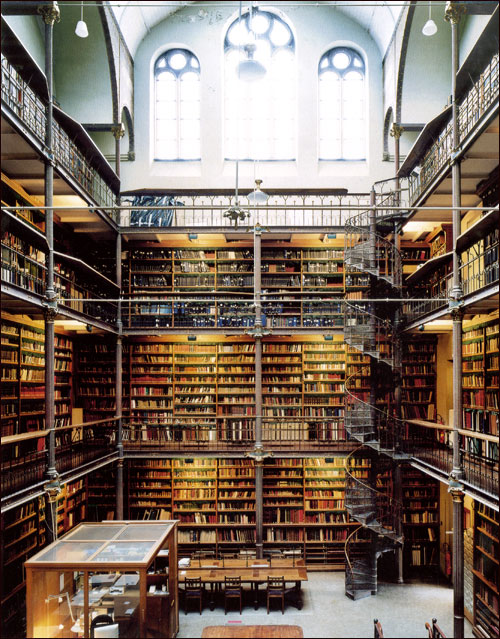My final digital library collection resource is NYPL’s Planning Digital Projects for Historical Collections. This site provides information about the purpose of digitizing historic materials, the planning of a digital project, the selection of materials, the organization of information, and the effective delivery of the materials. It’s an older site, but I found much of the information relevant today. In particular, I agree with the statement, “Preserving and presenting the true context of the materials are critical in delivering digitized materials on the web.” Last semester, I wrote a digital project proposal for a local history collection. The physical collection consisted of hierarchical vertical file folders. Another intern and I looked for similar collections online and found this one at the Fayetteville Public Library significant as the online collection represented the structure of the physical collection.
I have posted before about library buildings and design. Yesterday, I was rifling through suggested bookmarks on Diigo and came across a few sites that I’d like to mention including a post on Curious Expeditions titled, “Librophiliac Love Letter: A Compendium of Beautiful Libraries.” Some of these I have seen, many I have not, but there are some amazing libraries pictured. Who knew Portugal harbored so many beautiful libraries? Well, I bet many of you did, but I didn’t. I think my favorite is still the Rijkmuseum in Amsterdam that I’ve pointed to before.
Libsite.org is a recommendation service for library-related websites. Here you will find annotated links to library websites and online collections. In some cases, they describe any notable features or collections. In other cases, they indicate the content management system or provide a general description. Sites can be recommended by registered users, so if you want to promote a site/collection, this is one avenue.
The National Archives Experience lets users build their own collection, create pathways denoting the relationship between items, and create posters and videos with their collection materials. The materials are from the National Archives, and they include pictures and documents. They provide tags and links to related resources and media as well as lesson plans and teaching tools. I don’t usually share collections with my family unless relevant, but I did this one because it’s so cool. AND, not only did their eyes not glaze over, they wanted to see more- remarkable…


